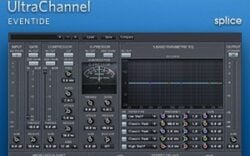Let’s take a look at some techniques you can take advantage of mid-way through the mixing process.
For those who just arrived at this blog post, we are in a series on beginner mixing tutorials educating young producers on the process and workflow of mixing a song. In our first blog post, we talked about how to prepare yourself for a mix, in our second blog post, we discussed four things that you can do during the first hour of mixing and in this third blogpost, we will explore techniques you can use once you are mid-way through a mix.
1. Equalization
We are now picking up from where we left off last week. After basic volume balancing, panning, and filtering, it is time to pull out your favorite EQ to shape and/or rectify certain issues in your mix. A great temptation for many engineers is to use EQ in isolation. For example, if a vocal needs a little high end, an engineer might solo the vocal, boost the high end with EQ and then un-solo it and leave it in the mix. Now, the engineer’s ears have been used to that high-end detail of the vocal and would not think that he has actually applied too much EQ. In short, the engineer is unintentionally placing focus on tweak he made because his ears have remembered that frequency while tweaking in isolation thus clouding his judgment.
To avoid that, I suggest switching quickly between having the solo on and off when applying EQ. This will give you better clarity into how your EQ affecting the track in the context of the overall mix.
2. Control the dynamics
Our current workflow as of now is to first do some basic volume balancing and panning, then applying filters to clean unnecessary frequencies, and lastly, shaping your sounds with EQ. This process should take you about an hour and a half to two hours, breaks inclusive. Although there’s no hard and fast rule here, following this workflow as a beginner can get you pretty far in terms of producing to a decent mix.
At this stage of the mix, you should be at a place where each track has its own space in the mix but should still sound “uneven”. In other words, there needs to be some volume automation of sorts to make your mix sound consistent dynamically. And this is where we bring in compressors. There are plenty of articles out there on what you can do with compression, but our biggest tip here is to listen to your mix at a low volume and take note of tracks that jump out at you or are inconsistent in volume. Now, apply compression to those tracks and repeat the process again till everything is more or less even.
3. Less is more
By now, you should be about slightly more than two hours into your mix. Remember that print / bounce you made before starting on EQ and compression? Take a listen to it and compare it to what your mix sounds right now. Your mix should definitely sound better, if not, you’ll know that something is wrong.
If you ask many top engineers, you’ll notice that they do not use a lot of plugins to achieve the sound they are looking for. Similarly, by using this thorough and rigorous way of mixing, you should have set a good foundation for your mix that you wouldn’t need that many plugins to get a mix to sound decent. Remember, less is more, do not over process things. Let your mix be dynamic, fluid and exciting at the same time.
March 9, 2017

.svg)
.svg)




